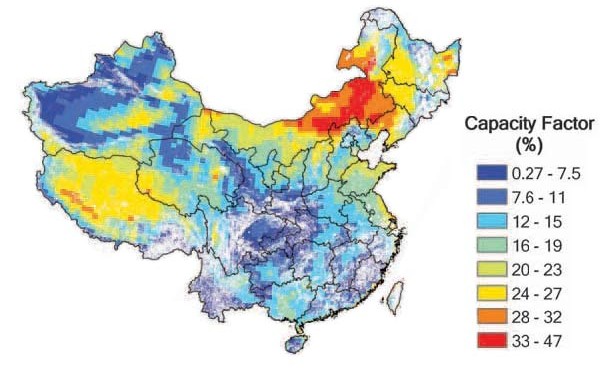China’s newly operational ultra-high voltage power transmission line, designed with the largest capacity in the world, has laid a foundation for transnational energy cooperation in Asia, according to experts.
About 50 billion kilowatt-hours (kwh) of electricity is planned to be transmitted from western to central China through the 800 kv ultra-high voltage direct current (UHVDC) transmission line this year after operations began in late January, according to the State Grid Corporation of China (SGCC), the project contractor.
Social scientists believe the new transmission line brings opportunity to shape up a power network between China, central Asian countries and even the whole of Asia.
“The line proves technologies have matured for long-distance, ultra-high voltage power transmission and they can be applied to a transnational power network,” said Cheng Lu, SGCC’s senior engineer.
According to SGCC, the line will become a major route to transmit wind and solar power generated in Hami prefecture, Jiuquan City of Gansu Province, and the Qaidam Basin in Qinghai Province.
Wind and solar power, though renewable and environmentally friendly, are unstable and require transmission together with thermal power.
“High-capacity transmission lines such as the Hami-Zhengzhou line make large-scale wind and solar power integration possible,” said Shu Yinbiao general manager of the State Grid.
Shu added that when equipped with these lines, northwestern China, which is rich in renewable energy resources, will be able to construct wind and solar power stations with large generating capacity.
Experts say China’s experience, especially in building transmission lines, can be expanded to other Asian countries.
“Mongolia has rich wind and solar resources while Kyrgyzstan and Tajikistan are rich in hydropower. They need high-capacity transnational transmission lines to expand their market,” said Meng Yongsheng, deputy head of the economics school of Xinjiang University of Finance and Economics.
Eric Kemp-Benedict, Asia Centre director at the Stockholm Environment Institute, said large-scale integration of power generated by renewable energy relies on strong power grid support.
Constructing an Asian power network may help break the bottleneck in using solar and wind power, he said.
China’s large energy bases are mostly distributed in the west and north, more than 2,000 km from the power network load centers in the eastern and central regions, said Zhang Guobao, director of the Expert Advisory Committee under the National Energy Administration.
“Ultra-high power transmission lines are a way out for the country’s imbalanced distribution of energy reserves,” Zhang said.
The operation of the UHVDC transmission line came after Chinese President Xi Jinping proposed the idea of the Silk Road economic belt during his visit to Central Asia in September last year. The economic belt is aimed at facilitate trade and investment, improve traffic connectivity, trade and monetary cooperation, and people-to-people exchanges.
“Countries have increased enthusiasm for working together and China has the technology, so we may be able to see a pan-Asia power network in the near future,” said Meng.
Most Asian countries are facing an imbalance of energy supply and demand.
“Major energy consumers like Japan and the Republic of Korea (ROK) rely on other countries for power supply. Central and northern Asian countries have rich energy resource supplies that exceed demand,” said Meng, who added that Asia is a huge energy consumption market with imbalanced energy reserves.
“An interconnected power grid means a lot to the ROK in terms of not only the power supply, but also future energy safety and energy structure,” said Jinsoo Song from the Korea Institute of Energy Research.
Song said that after the Fukushima nuclear crisis, the ROK reevaluated the safety of nuclear power and planned to scale it down, making power supply tight and a transnational power grid necessary.
Derek Arkinson, an expert with the United Nations Economic and Social Commission for Asia and the Pacific (ESCAP), said construction of an interconnected “super Asian power grid” that would allow countries to trade and transmit power would help strike a balance between power supply and demand and increase the efficiency of energy use.
“It will be a collective energy strategy for Asia,” Arkinson said.
“To ensure energy safety, Asian countries have to develop multilateral energy cooperation,” said Zheng Fangneng, head of the energy and transportation division at China’s Ministry of Science and Technology.


